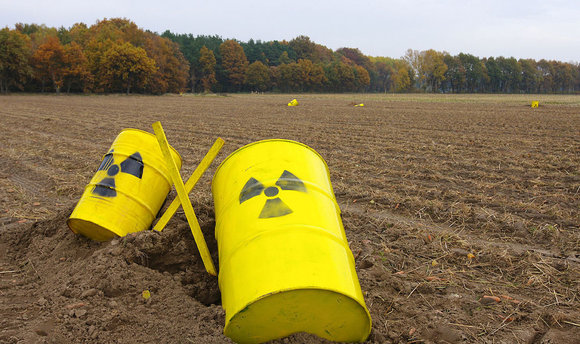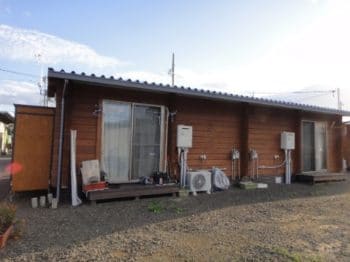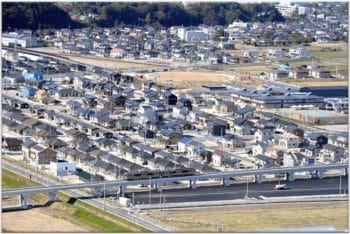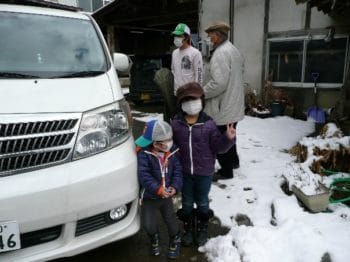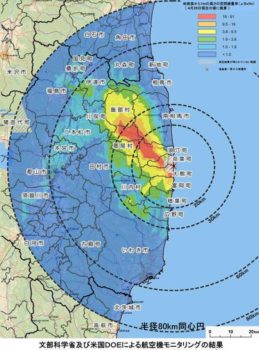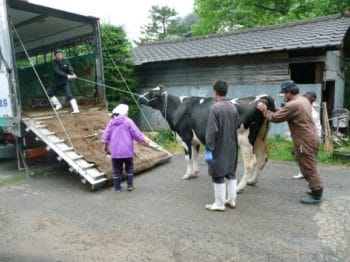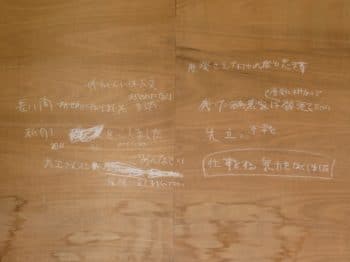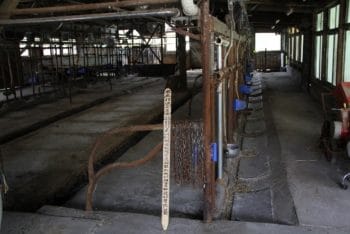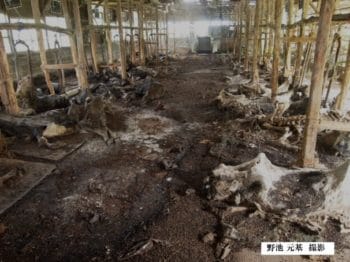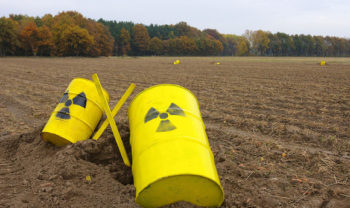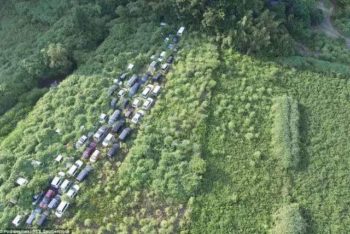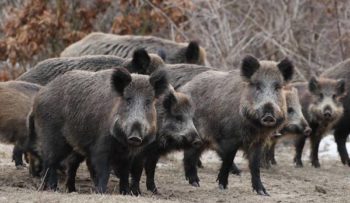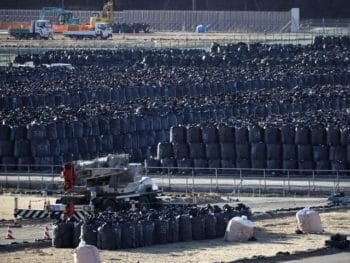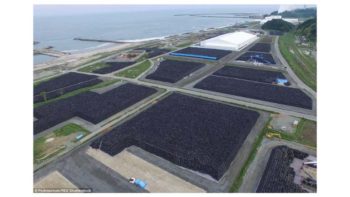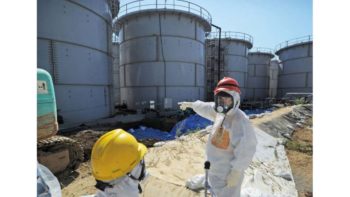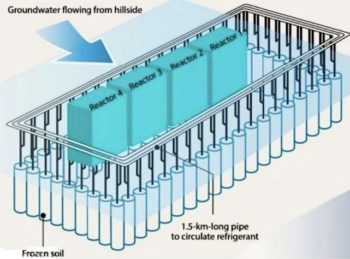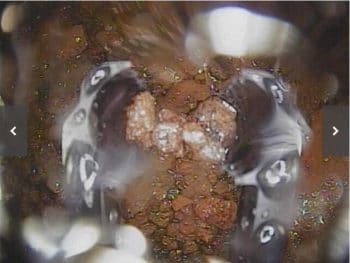It has been 8 years since the Fukushima nuclear disaster erupted. In the mainstream media, there is less and less information on the handling of the aftermath of the disaster. Yet, if we seriously examine the progress of the clean-up work in the past eight years, we would be hard put to feel a sense of relief. The most critical problem is that three reactors in the Fukushima Daiichi nuclear power plant had been damaged and the 250 tons of more than 1600 spent fuel rods were “reckoned” to have fallen to the bottom of the reactor vessel after having melted at high temperatures. The radiation level there was too high for humans to possibly come close, let alone remove the molten nuclear residue. The Japanese government and the Tokyo Electric Power Company (TEPCO) have given a figure: it would take 40 years to complete the decommissioning work. The time given, that of 40 years, is not justified by any corresponding procedural steps, and can be a wild guess. It has been 8 years and progress has only been snail-like. The suggested time frame of 40 years may be useful only in some consoling effect, to make believe nuclearthat the accident can possibly be dealt with in two generations. Can it?
Outside the nuclear power plant, more than 40,000 people of Fukushima are still living in refugee conditions. More than 300 square kilometers, accounting for about 2.3% of Fukushima Prefecture’s land, is still classified as “difficult-to-return zone”–a euphemism that refers in fact to the nuclear forbidden zones.
The government gave thyroid screening to about 380,000 children in Fukushima Prefecture in 2011-13 and 2014-15, and 187 children were diagnosed with thyroid cancer, many times higher than the general cancer level among children. In March 2015, the Nuclear Emergency Response Headquarters of the Japanese Government conducted a health check on 1,150 children under the age of 15 in the three districts Iwaki City, Kawamata Town and Iitate Village, which are closest to the mandatory evacuation area designated by the government. The report shows that 45% of the children had nuclear radiation detected in their thyroid gland. The government emphasized that radiation level was relatively low and posed no threat to health. (The half-life of Iodine 131 is only 8 days, but if the body is overexposed to it the chance of thyroid cancer after many years may increase; the half-life of Cesium 134 is 2 years, and the half-life of Cesium 137 is 30 years.)
With the authorities playing down the aftermaths of the Fukushima nuclear accident, the Fukushima disaster seems to have gradually disappeared from the eyes of the public, except for a few reports that appear on the anniversaries of 3.11.
What has caused this kind of “collective” amnesia? Can we comfort ourselves that the accident is already over so let us welcome tomorrow optimistically, with the belief that modernization and technology will bring us a life of convenience and stability?
The Japanese government is a master in creating a scene of peace and happiness. Next summer, the Olympics will be held in Tokyo. In 2013 during the competition for hosting the Olympics, Tsunekazu Takeda, President of the Tokyo Olympic Committee, wrote to the International Olympics Committee, “committing” that the Fukushima nuclear accident will not have any adverse impact on Tokyo’s hosting of the 2020 Olympic Games; that in Tokyo, 230 kilometers from the Fukushima nuclear power plant, life is “completely normal and safe”, water and air are not affected at all by the Fukushima nuclear leak. Japanese Prime Minister, Shinzo Abe, claimed that the polluted water is “completely under control” within a 0.3 square kilometers area in the Fukushima Daiichi nuclear power plant bay. What he did not say was that the bay and the outer ocean are not separated. 90% of the water in the bay flows out to the outer ocean once a week, to be replaced by water from the ocean.
Any person with a minimal common sense will not be convinced by this kind of “commitment”. Why would members of the Olympics Committee believe in it? In January this year, France prosecuted the chairman of the Japanese Olympics Committee for suspected bribery to gain votes, and the bribe was about 230 million yen (more than 2 million USD). It was then that we glimpsed some stories behind the success of the bid. Nevertheless, the successful bid to host the Tokyo Olympics has been a sophisticated public relations tactic: if even international organizations are not worried that the Fukushima nuclear leak has affected normal life, why should ordinary citizens worry too much? So, in March next year, we would see the torch relay of the Tokyo Olympics starting from J-VILLAGE in the coastal towns of Naraha and Hirono of Fukushima Prefecture. It was reported that the executive committee of Fukushima Prefecture, at the end of 2018, proposed the plan for torch relay, the reason being “a symbol for revival from the earthquake disaster”. Fukushima will, in a positive and inspiring way, symbolize revival from the earthquake catastrophe.
The Olympic flame would be igniting hope and smoothing wounds.
Not only that. The baseball and softball games that would return to the Olympics will be held in Fukushima City. In order to create an image of return to normal, the government has vigorously advocated the lifting of residential bans on the “residence restricted zones” in nuclear contaminated areas around the Fukushima nuclear power plant, involving 55,000 people. In March 2016, 65,000 refugees were living in temporary housing. One year later the number was reduced to 35,000. In order to encourage residents to return home, the authorities stopped granting evacuation subsidies to many people in March 2018. Many areas that still have questionable radiation levels are required to lift the evacuation instructions before the start of the 2020 Olympics. Although restrictions have been gradually lifted in some areas, very few residents are willing to return home. Those who are willing to return are mainly elderly people. Young couples with children are mostly reluctant to return to their home towns that are still under the shadow of the nuclear accident, and could not accept the level of acceptable radiation that the government designated for lifting the ban on the “forbidden zone”: an annual radiation of less than 20 millisieverts (mSv).
The “United Nation Special Report on the Implications for Human Rights of the Environmentally Sound Management and Disposal of Hazardous Substances and Wastes” was submitted to the UN General Assembly on October 25, 2018. The specialist Baskut Tuncak stated that the Japanese government, after the Fukushima disaster, raised the acceptable cumulative radiation exposure level from 1 mSv per year to 20 mSv per year, a 20 times increase, which is deeply disturbing. Tuncak said that “in 2017 the United Nations Human Rights Monitoring Mechanism proposed that Japan reduced the acceptable amount of radiation back to the level before the disaster, yet the Japanese government seemed to have completely ignored the proposal. That is disappointing”. According to information from the United Nation database, the German government had recommended that Japan should reduce the acceptable radiation exposure standard back to the level of 1 mSv per year, and the Japanese government “promised to carry out follow-up work”, but Tuncak believed that this proposal has not been implemented.
According to the International Commission on Radiological Protection’s standard, for ionizing radiation from non-background radiation, the average annual radiation dosage from artificial sources is limited to no more than 1 mSv, which converts to 0.1 microsievert (uSv) per hour.
The impact of nuclear contamination on people’s livelihood
In rural Japanese community there is deep emotional bondage. Festive dragon and lion dances held on festivals, people in the community knowing one another well, neighbors having harmonious and friendly relationships. The communities are relatively not individualized and atomized. Eggs sold at community fairs will have noted on them the family that raised the chickens that laid the eggs. It is full of human touch, and rarely cheats. However, the nuclear disaster has caused the villagers to become dispersed to various locations. The dairy farmers had to send their cows to the slaughterhouse and close their dairy operations.
Some stories are heartbreaking: a dairy farmer was dismal after sending his cows to the slaughterhouse; he set up a memorial tablet in the cowshed, saying we let you down, then committed suicide.
In some places the people evacuated. The cattle left behind and tied up in the shed starved to death.
Yet there were also touching stories about the ties between people and land: an old couple would drive one hour every day to return to their home in the high-radiation-contaminated area to farm, although with the radiation being so high there the crops were inedible. “We don’t know what else we can do if not farming.” They said that they were farmers and were very proud of it, but could not hide their helplessness in these times.
A batch of photographs taken in Fukushima shows the world the forgotten nuclear forbidden zones. On this contaminated land, plants have covered the abandoned homes. Formerly vibrant villages have become desolate, uninhabited ghost towns seen in movies.
The three towns Futaba, Namie and Tomioka near the Fukushima nuclear power plant have become ghost towns, and tens of thousands of people have left their homes. Nowadays, the imprints of human activities that were there in the forbidden zone have largely been covered by nature to turn into wilderness.
In the past two years, although the government refused the villagers’ request to relocate the village in whole, and used tough measures to force residents to move back, in contaminated areas such as Namie, only about 5% to 10% of the residents have returned. The dilemma they have to face is disrupted community ties, lack of community facilities such as education and health, and lack of employment opportunities. Even if they are willing to farm, they also face enormous challenges. According to the Japan Broadcasting Association (NHK) on March 7 this year, the Japanese Ministry of the Environment had announced that pollutants such as contaminated soil and vegetation in the Fukushima Prefecture were still piled up in 104,938 residential courtyards and parking lots, as well as 933 temporary storage places.
The radiation contamination of farmland cannot be completely cleaned up. Whenever it rains, contaminated soil from the forests in the mountain would be washed down again. There is also another headache: in the no-man’s land of the nuclear accident, wild boars contaminated with radiation have quickly multiplied and the number had increased from 3,000 in 2011 to 13,000 in 2016. The wild boars that had mutation from radiation were not edible after being hunted, and corpses of wild boars were piled up in large numbers.
All these various issues are what the official image of “normalized home return” tries to conceal.
In 2010, the export volume of agricultural produce from Fukushima Prefecture was about 153 tons. In 2012, after the Fukushima nuclear accident, the export volume dropped sharply to about 2 tons. After that, it gradually recovered and reached about 67 tons in 2016. In spite of this, Fukushima still has a large number of abandoned fields and villages. The locally produced peaches, tomatoes, vegetables, and even people who have moved from Fukushima to Tokyo, are very much discriminated against, like objects and persons infected with syphilis.
In April 2017, the news that Fukushima nuclear power plant planned to release 1 million tons of radioactive waste water into the Pacific Ocean was exposed, and the residents objected. About one-fifth of Japanese residents refuse to take fish and food from Fukushima. Most people believe that the radioactive water is not safe and should be stored rather than discharged to the sea!
In 2016, the fishing catch from Japan’s coastal waters was only about 2,000 tons. This figure was just 8% of that before the Fukushima nuclear accident. The volume of deep-sea fishing was also only half of that before the disaster. Autumn is the peak fishing season for the Fukushima saury and for flounders. Before the disaster fishermen were busy every morning, but now the demand has plummeted. Only half of the 1000 fishermen from there are going fishing, and only twice a week instead of everyday. Consumers still have distrust towards seafood that is possibly contaminated.
Pollution of water and soil cannot be redressed
The government announced that as of March 2018, other than the nuclear forbidden zones, the Fukushima Prefecture has basically completed the work of clearing surface radioactive material. Rows and rows of black garbage bags were temporarily stored in the fields. In order to centrally safe-keep the contaminated soil, the Japanese government and TEPCO have “rented” large areas of agricultural land in the nuclear forbidden zones around the Fukushima Daiichi nuclear power plant. From March 2015, a medium-term storage facility for contaminated soil is being built that can operate for 30 years. The total cost of the project is about 1.6 trillion yen (about 14.3 billion USD). Here, about 5,000 people work on the contaminated soil everyday. In fact, it is a huge work place inside the nuclear forbidden zones for 5,000 people!
According to Japan’s Asahi Shimbun, after the accident at the Fukushima Daiichi nuclear power plant, the contaminated soil that needed decontamination in Fukushima Prefecture reached more than 14 million cubic meters. At a meeting held in June 2016, the Ministry of the Environment of Japan stated: “From the point of view of the safe-keeping disposal site, it is unrealistic to complete ultimate disposal of all the soil.” However, the Ministry of the Environment proposed an “optimistic” plan: secondary use. At a meeting held in December 2018, the Ministry of the Environment estimated that the 14 million cubic meters of contaminated soil can be fully reused, that is, reused on public facilities in Fukushima, in the “best development” scenario of technologies such as concentration reduction. This plan aims to reduce the amount of contaminated soil that needs to be dealt with down to 30,000 cubic meters, which is 0.22% of the total amount.
The contaminated soil that needs final treatment is expected to be transported to the ultimate disposal site outside Fukushima Prefecture in March 2045. However, negotiations around the disposal site have not yet begun. Japan’s Ministry of the Environment’s Assistant Officer, Yamada Koji, said: “It’s not a simple matter to accept ultimate disposal of the contaminated soil. We are currently working hard to gain understanding around the country”. Residents outside the Prefecture refuse to give the “understanding” and protested that “they are not comfortable with radioactive material”, making this plan difficult to realize.
Yet the problem of contaminated soil is a mole hill compared with that of water contamination. The impact of the Fukushima nuclear accident on the ocean is unprecedented, as 80% of the radioactive material has leaked into the ocean. Moreover, even today there is still 400 tons of water going through the reactors and get contaminated every day. TEPCO has to continuously pump water onto three reactors to cool the overheated, radioactive nuclear fuel that was melted. The water carries away the radioactive material from the reactors and flows into purifying equipment, but the purification filter cannot remove all the radioactive material from the water.
What can be done with the radiation-contaminated water that continues to be produced every day? The only resort is to build huge steel water storage tanks. The nuclear waste water is now stored in 1,100 grey, blue or white storage tanks on the ground. As of the beginning of 2017, the storage tanks carry 960,000 tons of nuclear waste water, and TEPCO is still installing more storage tanks, which will soon carry more than 1 million tons of nuclear waste water.
Over the next few years, the space around nuclear power plants that can be used to store the nuclear waste water will be exhausted. Shigenori Hata, an official of the Ministry of Economy, Trade and Industry, said: “We cannot go on manufacturing tanks.”
The government has also tried to use high-tech methods to block groundwater that continues to infiltrate the reactors. The wall of frozen soil, costing 35 billion yen (about 312 million USD), began construction in 2017. In the ground a 1.5-kilometre long wall is built around reactors No. 1 to No. 4 in Fukushima Daiichi Nuclear Power Plant, where 30-meter-deep freezing pipes are installed. The frozen wall would be constructed underground with circulation of refrigerant. However, there has been a 1% leakage from the frozen soil wall. According to the report of TEPCO on March 1, 2018, the frozen soil wall can only reduce 80 tons of nuclear waste water every day. The efficiency of using it by itself is far less than anticipated. As such, in addition to the frozen soil wall, the authorities have resorted to other methods, including the use of “shafts”, and removal of groundwater from the west side of the wells for indirect discharge into the sea, reducing the daily average of contaminated water from 490 tons to 110 tons.
Investigation of molten nuclear residue
The continuous pumping of water to cool nuclear residue is not a permanent solution. The most difficult and fundamental problem is to remove the molten, highly radioactive nuclear residue in reactors 1, 2, and 3.
On March 11, 2011, the huge Pacific tsunami broke through the ten-meter-high embankment around the six reactors at the Fukushima nuclear power plant, causing the reactors’ cooling system to fail. The nuclear core was quickly overheated and melted, and radioactive material leaked in all directions. One year later the government claimed to have entered the phase of waste furnace operation. However, the radiation level of the nuclear core in reactors 1, 2, and 3 was severe after it was melted, and humans could not go near them. In the following years, TEPCO has arranged repeatedly to have robots equipped with temperature and radiation sensors to enter the reactors for inspection. In the 2016 test, in the spots where the fuels were originally placed, only little or no fuel could be found. Therefore TEPCO concluded that most of the nuclear fuel had melted and flowed to the bottom of the reactors’ pressure vessel.
In the past year, information about the waste furnace operation is a story about robots.
On February 16, 2017, a robot specially designed by Toshiba Corporation, equipped with cameras in the front and rear which can raise its back like a scorpion to switch photo angles, went into the safety capsule of No. 2 reactor and estimated that the radiation dosage reached an overwhelming level of 530 sievert (1 Sv=1 million uSv), more than seven times the estimate. Humans exposed to it would die within seconds. The specially designed robot could only last for two hours. It malfunctioned and could not walk, and was left inside the safety capsule, unable to be retrieved. This official investigation was announced to have failed.
TEPCO analyzed the images that were captured and estimated the radiation levels, as well as partially confirmed certain conditions inside No. 2 reactor. For example, there was a deposit of suspected molten nuclear fuel in the lower center of the pressure vessel, about 1 meter long. The grid-like bracket platform had also been partly broken off and perforated, about 1 meter long and wide. It was reckoned to have been caused by high-temperature nuclear fuel that fell on it, causing it to melt and deform. This time that a large hole was photographed meant that the nuclear fuel had already corroded and penetrated the pressure vessel where it should have stayed. That is to say, the nuclear material had already broken through the first and second layers of defense, and beginning to erode the third layer at the bottom of the pressure vessel. It is not possible to know if the third layer has been eroded.
A large hole appeared in the support platform below pressure vessel of No. 2 reactor, with large amount of suspected nuclear fuel attached.
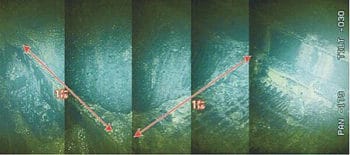
A large hole appeared in the support platform below pressure vessel of No. 2 reactor, with large amount of suspected nuclear fuel attached.
On March 18, 2017, TEPCO conducted an inspection inside the safety capsule of reactor no. 1 with a robot. This robot was equipped with measuring instruments and a waterproof camera, and has measured radioactive value of up to 11 Sv per hour in the polluted water about 30 cm from the bottom of the capsule. On March 20, the robot measured a radiation value of 6.3 Sv per hour in polluted water about 1 meter from the bottom of the container. That means the closer to the bottom of the container, the stronger the radiation. The molten core residue may have fallen on the bottom of the safety capsule.
On July 19, 2017, TEPCO held a press conference to announce for the first time the specific conditions inside reactor No. 3 photographed by an underwater robot. The pictures showed that No. 3 reactor has sustained serious damage, but the molten nuclear fuel could not be found.
On February 13, 2019, the company announced that it had taken a step toward achieving the most difficult task of the reactor scrapping operation–taking out fuel debris. In No. 2 reactor, TEPCO carried out the first investigation on the characteristics of nuclear fuel fragments that were melted in the safety capsule, confirming the hardness, and successfully picked up small pebble-like deposits that might be nuclear fuel fragments. The catheter-like instrument was inserted inside from the side of the safety capsule, and the investigation was operated by a remote device that would be turned on and off with two “fingers”.
The survey was conducted on February 13 from 7am to 3pm. Due to the extremely high level of radiation in the capsule, a remotely operable device was used to lower the equipment at the front end of the catheter to the bottom of the capsule, to ‘touch’ the deposits that were there at 6 places. In five of these, it was confirmed there were pebble-like deposits several centimeters in size as well as rod-shaped structures which were movable. Some could be lifted up to 5cm. These deposits were all objects that had certain hardness and not having collapsed or been deformed.
The head of the Public Relations Department of TEPCO said at a press conference: “By realizing the moving of the objects, it was confirmed that the fuel fragments could be extracted. However, for the objects that cannot be clamped and picked up, it would be necessary to develop other instruments.” That is, the clay-like deposits could not be taken out yet.
The information and data given by the Japanese government and TEPCO may create the impression that the clean-up work is constantly progressing and that the problem can be resolved with the help of high-tech robots. However, with science so advanced today, humans are almost helpless when faced with a nuclear disaster situation such as Fukushima. Expenditures on the decommissioning, cleanup and compensation were estimated at 11 trillion yen (100 billion USD) in 2013, and estimated at 21.5 trillion yen (192 million USD) in December 2016, almost doubled. The problem is, the nuclear disaster cannot be compensated for with money with its effect on human life, water, soil and nature.
The Ministry of Economy, Trade and Industry and TEPCO held a joint press conference in Tokyo on February 25 this year to report on the status of the scrapping operation at the Fukushima Daiichi nuclear power plant. The head of the Decommissioning of the Fukushima Daiichi Nuclear Power Plant said that currently reactors No.1 to No.4 are in a state of low-temperature and stability. The 1535 fuel rods in the spent fuel pool of No.4 reactor that was not in operation at the time of the accident had all been taken out at the end of 2014. More than 1,600 fuel rods are still in the spent fuel pools of reactors No.1 to No.3 where melting of the core had occurred. The plan to remove 566 fuel rods from the No.3 reactor spent fuel pool has been repeatedly postponed, mainly because the radiation level at the top of the No.3 reactor plant has not fallen to the expected level. At the end of March this year, TEPCO is expected to begin taking out the fuel rods from the spent fuel pool of reactor No.3. At the same time, it has begun to construct an additional top cover on No.3 reactor to prevent the radioactive material from scattering when the spent fuel rods are taken out.
It seems that there is progress! However, the deposits that the robot had touched in the No.2 reactor were granules of a few centimeters, and the highest they could be lifted was up to 5 cm. In reactors No.1 to No.3, there are about 250 tons of extremely high radioactive molten nuclear residues, and their locations are unknown. We use the common sense of ordinary people to ask: Can it be taken out? How to take it out? Where is it to be stored after being taken out? How is it to be stored?
The Japanese government and TEPCO have no answers. It seems that the best scientists in the world do not have answers either.
References
(in Chinese)
- “The crisis of the Fukushima nuclear power plant accident has not been lifted five years later”, Global Science, April 7, 2016.
- “Fukushima nuclear power plant radiation amount was 7 times more than anticipated; the robot can only work 2 hours”, NetEase Technology, February 4, 2017.
- “Fukushima nuclear accident: Japan owes the world a confession”, Lookout, No.8 of 2017.
- “Japan’s TEPCO intends to conduct a contact investigation on the fuel debris of No.2 reactor of Fukushima”, World Wide Web, July 26, 2018.
- “Human rights experts: the threat of nuclear radiation in Fukushima is still there; the government should stop the home return policy”, UN News, October 25, 2018.
- “TEPCO said it could take out the fuel debris of No.2 of the Fukushima nuclear power plant”, Observer Network, February 14, 2019.
- “8 years have passed, and the ‘Nuclear Prohibited Zone’ in Fukushima has now become like this”, Reference News, February 26, 2019.
- “Fukushima nuclear contaminated soil is difficult to handle, the Japanese government claims that 99% can be re-used”, Global Times, February 26, 2019.
- “Japan intends to remove the fuel rods of No.3 reactor of Fukushima nuclear power plant”, Journal of Chinese Academy of Sciences, February 28, 2019.
- The Chinese version of this paper appeared on March 11, 2019, in Caracole Community: weixin.qq.com

